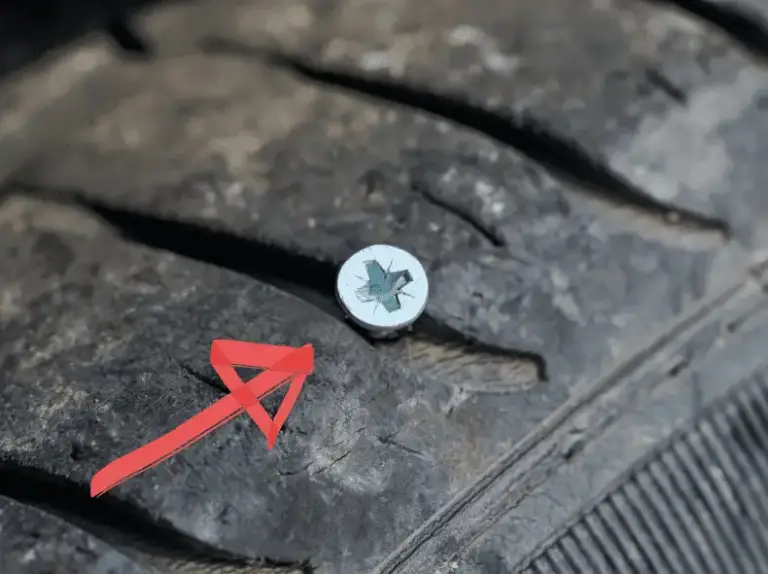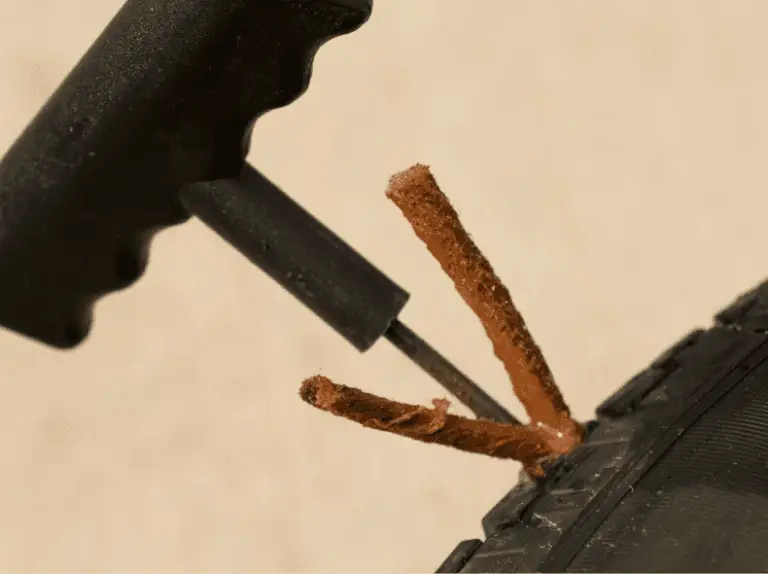When it comes to tire repair, one of the most common methods is a tire plug. It’s an effective, fast, and inexpensive way to temporarily repair a punctured tire.
Unfortunately, one of the major drawbacks of this tire repair method is that it can fall out.
So, what makes a tire plug more likely to fall out?
To start with, plugs aren’t the best repair, even if fitted properly. The inside of the tire hasn’t been patched and vulcanized to the tire’s inner sidewall as with a proper patch repair.
Okay, the most common reason is that the plug was not inserted properly. If the plug is not completely secure, it can fall out of the tire with the right amount of pressure on it as it flexes and travels over bumps.
Additionally, other factors can make a tire plug more likely to fall out, such as:
- The plug was not sealed properly. If the plug is not sealed properly with cement, it can be more prone to coming out of the tire. Cement or glue should be used to maintain a tight seal.
- General wear from the road surface, road salt, and other chemicals can cause the rubber to become less supple and fail.
- The plug was not inserted deeply enough. A tire plug should be inserted about a quarter of an inch into the tire, as this is enough to pierce the cord and steel belts. You feel the resistance ease when you push the plug through.
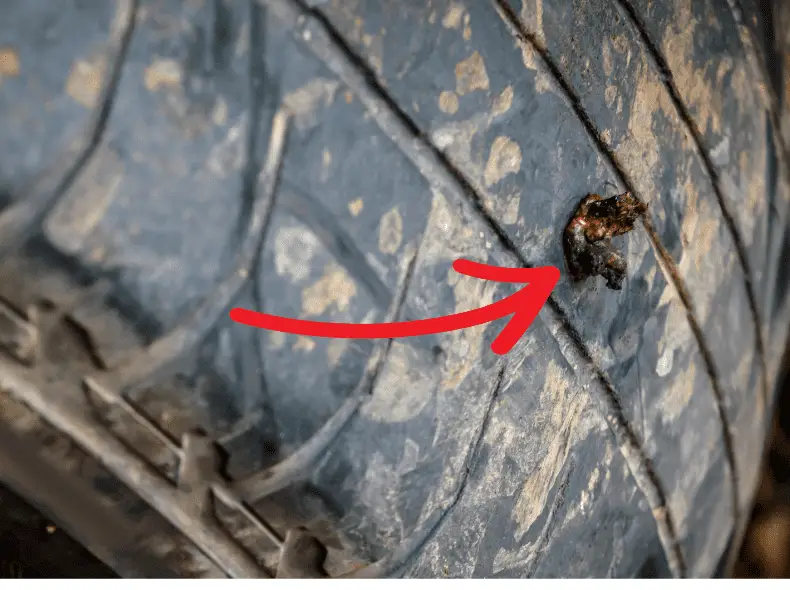
These are all important factors to consider when inserting a tire plug—ensuring that the plug is properly inserted and sealed with cement, that the tire is properly inflated, and a good quality plug kit is used.
Inserting the plug deeply enough is also an important step to take to ensure that the plug stays in place.
If all of these steps are taken, the likelihood of a tire plug falling out is greatly reduced.
Other Tire Plug Considerations
Choosing Quality Plugs and Installation
Another important consideration in preventing tire plugs from falling out is choosing a high-quality plug.
There are several types of tire plugs, including mushroom plugs and string plugs, and they vary in their effectiveness.
String often called strip plugs, are the least effective, although they are still used a lot as they are cheaper.
Mushroom plugs are better as they at least seal – albeit not well the inside wall of the tire.
You need more tools for this type of plug as the plug needs to be screwed into the tire with an insertion tool provided. Often confused with combination patches, they are different.
A mushroom plug is less likely to fall out than a string plug as it has the mushroom part of the plug inside the tire holding it in place. The string plug doesn’t have this.
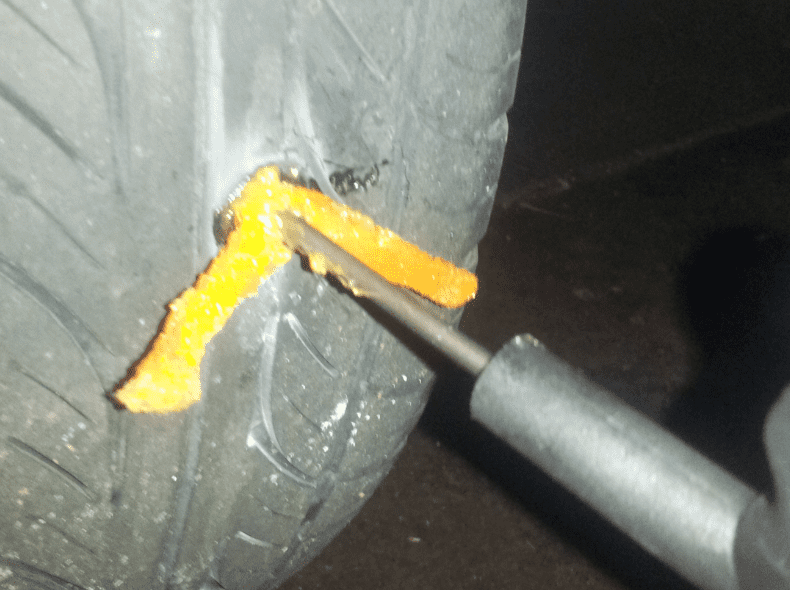
Proper Inflation and Maintenance
In addition to choosing and installing quality plugs, proper inflation and maintenance are also essential to preventing plugs from falling out.
Tires should be kept at the recommended pressure, as both over-inflated and under-inflated tires can cause problems.
Additionally, tires should be regularly inspected for signs of wear and tear, as plugs that are installed on worn-out tires are more likely to come out.
The Dangers Of A Tire Plug Falling Out
Horror stories about tire blowouts from improper installation repair are very common.
But few of us realize just how serious the consequences of a tire blowout can be.
When a tire blowout occurs, it can lead to a complete loss of control of your vehicle, causing a potential for serious injuries or death.
A tire blowout can cause the vehicle to veer off the road, skid, or even roll over. Various reasons can cause a tire blowout, but one of the most common causes is a tire plug that is not installed properly and other poor tire repair practices.
Conclusion
In conclusion, when inserting a tire plug, it is important to ensure that the plug is properly inserted and sealed with cement, that the tire is properly inflated, and that the plug is inserted deeply enough.
Choosing a high-quality plug is essential to ensure that the plug stays in place. By taking all of these factors into consideration, the likelihood of a tire plug falling out is greatly reduced.
Bear in mind that a tire plug is only a temporary repair, according to all tire manufacturers and the Tire Industry Association.


![How Do Tire Plugs Work? [Answered] tire-repair-kit](https://carzaza.com/wp-content/uploads/2023/12/tire-repair-kit-300x224.png)
![How Fast Can You Drive On A Patched Tire? [ANSWERED] tire-patch-repair](https://carzaza.com/wp-content/uploads/2023/12/tire-patch-repair-300x150.png)
![Can A Patched Tire Blowout? [Occasionally] Tire-blowout](https://carzaza.com/wp-content/uploads/2023/12/Tire-blowout-300x224.png)
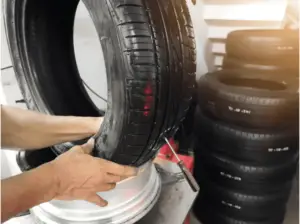
![Is Patching A Tire Safe? [Here’s When and Not To] tire-patch-tire-shop](https://carzaza.com/wp-content/uploads/2023/12/tire-patch-tire-shop-300x224.png)
